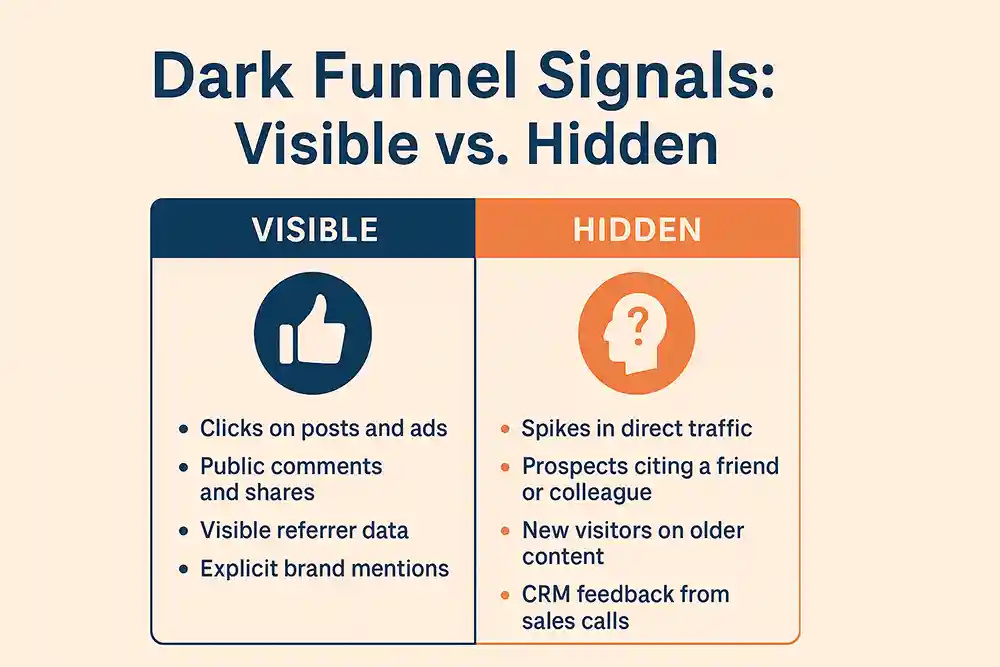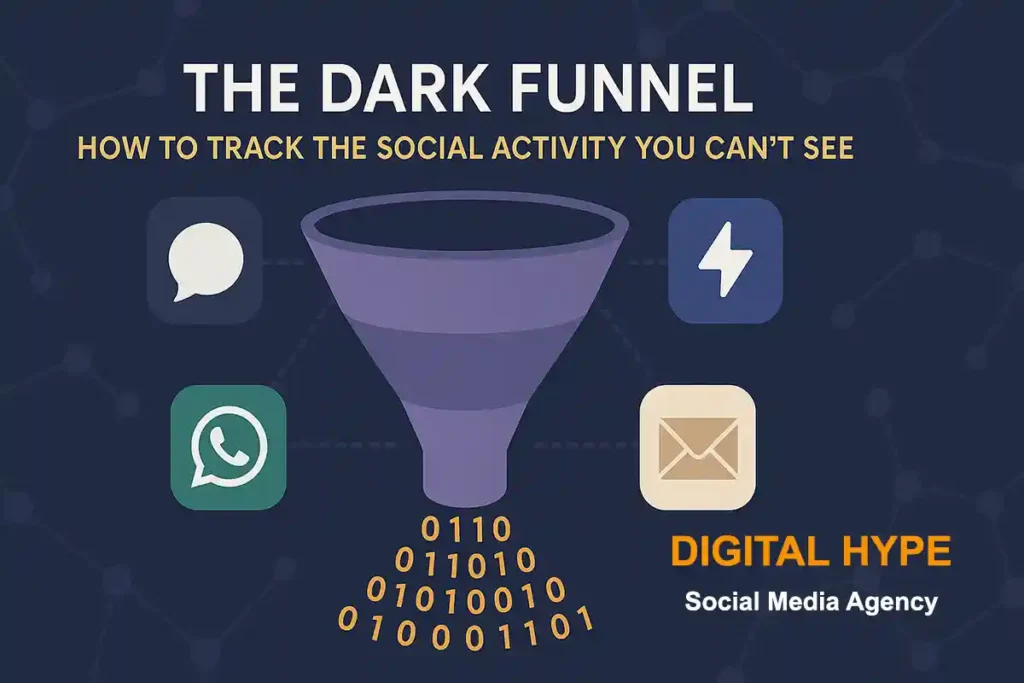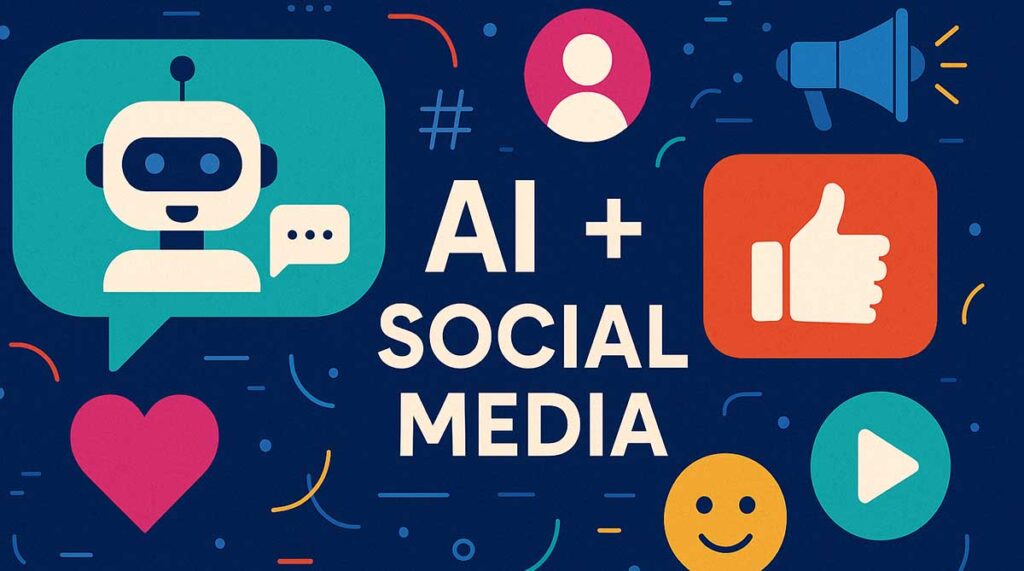What Do We Mean by “The Dark Funnel”?
Let’s lock in a definition first:
The dark funnel refers to all the hidden sharing, recommendations, and conversations that influence buying decisions but happen outside traditional analytics — in WhatsApp, Messenger, Slack, Teams, email, or even offline chats.
It’s “dark” because it leaves no visible footprint in your dashboards, but don’t mistake invisibility for insignificance. These days, dark social is where most trust-building happens.
Why This Blind Spot Matters More Than You Think
Sit with any SME owner in Bournemouth, Poole, or further afield and you’ll hear the same frustration: “We know people are talking about us, but we can’t prove it in the data.”
That gap isn’t trivial. Gartner reports that up to 67% of the buyer journey is now digital — but much of it happens in untrackable environments. Source: Gartner.
Ignore the dark funnel and you undervalue the very activity most responsible for high-intent leads. You end up chasing the noisy channels because they’re easy to measure, while neglecting the trust-driven conversations quietly generating demand.
What Most Businesses Miss
The biggest mistake is treating dark social as a lost cause. It’s not.
You don’t need perfect tracking. What professionals know is that you can build proxy signals:
- Traffic echoes: sudden spikes in direct traffic after content drops often mean private sharing.
- Prospect breadcrumbs: “my colleague sent me this post” is attribution hiding in plain sight.
- CRM chatter: recurring mentions of the same article or video suggest group-level sharing.
These signals don’t appear in Google Analytics, which is why beginners often overlook them. But to seasoned marketers, they’re gold dust.
The Trade-Off Few Acknowledge
This is where most SMEs trip up.
- Short-term wins: Paid campaigns and boosted posts provide clear, trackable results.
- Long-term consequences: Trust-building content shared in private networks doesn’t show in the dashboards but quietly compounds reach.
The trade-off? If you optimise only for what’s visible, you starve the long-term engine. I’ve seen businesses cut the very campaigns fuelling private shares, simply because the reports didn’t look impressive enough.
The Hidden Challenge: Privacy and Ethics
There’s also an elephant in the room: privacy law and user trust.
Dark social exists partly because people want to share without being surveilled. GDPR in the UK and EU makes it crystal clear that you can’t and shouldn’t try to pierce private messages.
The challenge isn’t to spy harder, but to build indirect measurement models that respect privacy while still surfacing useful insight. Treat dark social not as something to uncover fully, but as a set of shadows you can learn to read.
Tools and Tactics Professionals Use
Here’s where we move beyond generic “track links” advice. Below is a practical view of the tools available, including costs and trade-offs.
| Approach | How It Works | Effort Level | Cost | Reliability | Best Use Case |
| UTM Parameters | Add source tags to campaign links. | Low | Free | Medium (breaks on copy/paste). | Paid ads, newsletters. |
| Social Listening Tools | Track brand mentions in public forums/social. | Medium | £50–£500/mo | Low–Medium | Spotting trends, PR signals. |
| CRM Conversation Tracking | Capture “heard about you from…” in call notes. | Medium (needs training) | Free with CRM | High (qualitative) | High-value B2B. |
| Custom Redirect Links | Short links (Bitly/Rebrandly) give click data. | Low | Free–£30/mo | Medium | Campaign PDFs, lead magnets. |
| Pulse Surveys | On-site “where did you first hear about us?” | Medium | Free–£100/mo | Low–Medium | Consumer-facing sites. |
Takeaway: no single tool will solve the dark funnel. But together, they give enough light to see the outlines.
X vs Y: Visible vs Dark Social
Visible Social: measurable likes, shares, comments, and clicks inside platform dashboards.
Dark Social: invisible shares in private groups, chat apps, and emails, surfacing only as indirect signals.
Key difference: visible social flatters your ego with numbers; dark social reveals how trust actually spreads.

Micro-Story: When Metrics Mislead
A Dorset-based training company once doubled down on Instagram ads. Their dashboard looked fantastic: reach was up, clicks were up, and the cost per click was down.
But when we interviewed new clients, half of them said, “Oh, your guide was passed to me in our work WhatsApp group.”
The ads were helpful in awareness, but the actual conversion driver wasn’t Instagram at all. It was dark funnel activity that their dashboards completely missed.
Struggling to Prove ROI From Social Media?
The dark funnel doesn’t have to stay invisible. Our Social Media Marketing services uncover the signals that matter — from audience identification to account management. Let’s connect the dots between unseen influence and measurable growth.
Talk to Us TodayInsider-Level Strategies Few Talk About
- Dark Funnel Tagging: Seed each campaign with subtly different URLs for each distribution channel. When those URLs resurface as direct traffic, you know where the spark started.
- Echo Tracking: Watch which older blog posts suddenly spike, these are often being circulated privately. Refresh and re-amplify them.
- Value-Heavy Shareables: Tools, calculators, and templates travel better in private groups than ordinary posts. Build more of them.
- Sales Team Intelligence: Train sales to ask the attribution question every time. The answers, logged consistently, often reveal which WhatsApp groups, Slack channels, or industry forums are spreading your content.
Bigger Picture: Dark Social Is a Trust Signal
Here’s the punchline. People don’t share with you in private groups unless they trust you enough to put their own credibility on the line.
Dark social is less about measurement, more about trust velocity — how quickly and credibly your ideas spread through human networks.
If you keep chasing visible metrics, you’ll always be three steps behind the businesses building influence in the shadows.
FAQs: Dark Social & the Hidden Funnel
What exactly is dark social in marketing?
It’s when content is shared in private spaces like WhatsApp, Messenger, or email, where analytics can’t track referrers.
Why can’t analytics track it?
Private shares strip referrer data, so traffic shows as “direct.”
How can SMEs spot dark social activity?
Look for unexplained direct traffic spikes, CRM notes from sales calls, and resurgent older posts.
Is dark social more of a B2B or B2C issue?
Both. B2B has Slack/Teams/email, B2C has family WhatsApp groups.
What’s the risk of ignoring dark social?
You’ll under-invest in content that’s really driving demand and over-spend on trackable ads.
Are UTM tags enough?
Helpful, but not foolproof. Many shares lose the tags when copied and pasted.
Can social listening tools help?
They catch open-channel mentions but won’t reveal private group sharing.
How do you separate dark social from genuine direct traffic?
Segment by landing page: bookmarks usually hit the homepage, while spikes on niche content hint at dark shares.
What’s the best KPI for dark social?
Look at correlation metrics — e.g., traffic echoes, assisted conversions, and conversion lag times — not just last-click data.
What should SMEs do first if budgets are tight?
Start with low-cost link shorteners, CRM note discipline, and segmenting direct traffic by page. Scale up to paid tools later.
Stop Chasing What’s Easy, Start Reading What’s Real
Too many businesses confuse visibility with value. Just because you can measure something doesn’t mean it matters.
The real growth in 2025 will come to SMEs who understand that the conversations happening out of sight are often the ones that count the most. The dark funnel isn’t your enemy; it’s your biggest competitive advantage if you learn how to read the signals.
In Bournemouth and across the UK, I see it every week: the businesses that win are those who stop optimising for dashboards and start optimising for human trust.


